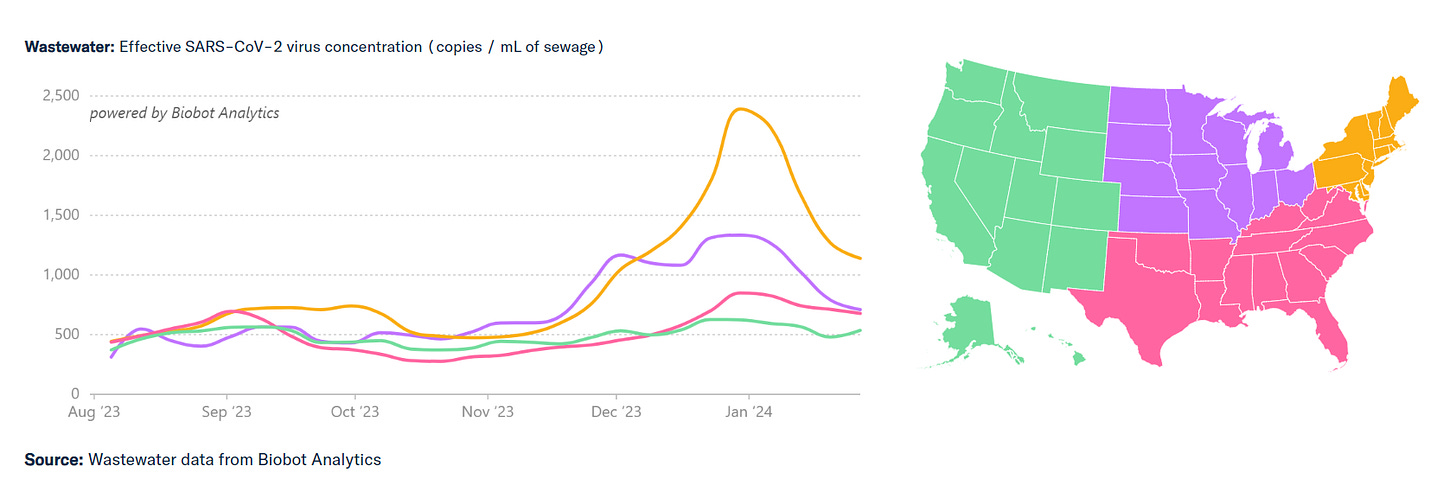Respiratory viruses on the way down
February 5, 2024
A brief note about how things are going on the respiratory virus front.
The portion of office visits due to respiratory viruses is on the way down. This is great news, and means less influenza, COVID-19, RSV and other viruses keeping employees away from work and their children away from school.
Portion of office visits due to respiratory disease by week
Source: Centers for Disease Control and Prevention February 4, 2024. LINK Red line and arrow shows where we are now- other colors represent previous years. It’s still “flu season” as long as over 3% of office visits are for respiratory disease.
About those kids - this graphic gives you a sense about how pediatricians’ visits are much more likely to be due to respiratory disease. And when children are sick, their parents are more likely to be away from work for childcare or their own illnesses.
Portion of office visits due to respiratory disease by age
Source: Centers for Disease Control and Prevention February 4, 2024. LINK
The detection of the virus that causes COVID in wastewater is also coming down across the country.
SARS-CoV2 Wastewater concentration by geography
Source: Biobot February 4, 2024 LINK
Daily COVID hospital admissions are also down from their peak a few weeks ago. The variant JN.1 is likely responsible for most infections now, and it does not appear to cause more illness than the XBB variant previously dominant. The vaccination designed for XBB that was produced this fall remains available, and decreases the risk of infection by about 54%, which is excellent.
Implications for Employers:
The variant JN.1 is now dominant, and does not appear to cause more serious illness than previous variants. Updated vaccines distributed this fall remain available and new data shows that they are 54% effective at preventing infection.
This year’s influenza vaccinations, also still available, decreased hospitalizations from influenza by 47% in adults under 65.
Employers are likely over the worst of absences due to the winter virus season, although there can be a secondary wave of influenza b in late winter or early spring. Sick leave and encouraging sick colleagues not to come to the workplace helps prevent workplace transmission of respiratory viruses.
Workplaces should remain “mask friendly,” as many employees might be at higher risk or live with those at higher risk.
Thanks for reading. You can find previous posts in the Employer Coverage archive
Please subscribe, “like,” and suggest this newsletter to friends and colleagues. Thanks!



